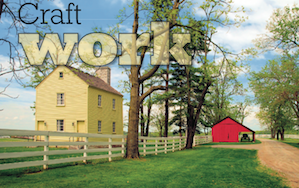Dynamic’, ‘innovative’ and ‘American whiskey’ aren’t words that often appear in the same sentence. But at the moment you’d have to look long and hard to find any whisky-producing nation more energised or dynamic than that of the United States.
The rise and rise of craft distilling in the country has continued unabated in recent years, but if you have been following what has been happening Stateside and think the ride has been exciting so far, then strap yourself into your seat because, quite frankly, we ain’t seen nothing yet.
American whiskey is entering a critical and game-changing period as the first wave of new distillers come of age and set about getting serious, and how events pan out in the coming months will have a huge bearing on how the American whiskey industry looks in the future and how big a player on the international market it is going to be.
But, while the ride has been and will be an exciting one, it’s about to be very bumpy as well. There are big battles ahead as the new distillers vie to establish themselves and the traditional big producers in Kentucky retrench, call rank and seek to take advantage of a growing number of new overseas markets.
Overall American whiskey is in a major state of transition and some serious questions need to be answered, the biggest of which is ‘will the real American whiskey scene please stand up’?
It’s worth taking a minute to reflect on just what has taken place in America in the past decade.
Not that long ago American whiskey consisted of a handful of distilleries in Kentucky making bourbon, two in Tennessee making Tennessee whiskey, and a smattering of distilleries across the country making small, inconsequential and rarely exported whiskey. Although Jack Daniel’s is America’s biggest producer, Kentucky bourbon is the nation’s standard bearer. It is a region renowned for its traditionalism and, with the exception of a little bit of rye and wheat whiskey production, it has been content to make one style of whiskey exceptionally well.
The rules governing the production of bourbon are stricter than even those governing the production of Scotch whisky and never is the expression ‘you don’t fix what’s not broken’ more in evidence. And Kentucky’s simple and straight way of doing things has benefited other regions, too. For instance, although American whiskey can be bottled at any age, the Kentucky distillers have always been happy to recognise the Scottish-led European definition of whisky as having to have matured for three years, and has unquestionably exported only older stock to Europe. Indeed, until the growth of the new craft distillers, American whiskey was in a state of contented equilibrium.
Evolution
That’s not to say that it hasn’t evolved at all. Indeed, the opposite is the case.




